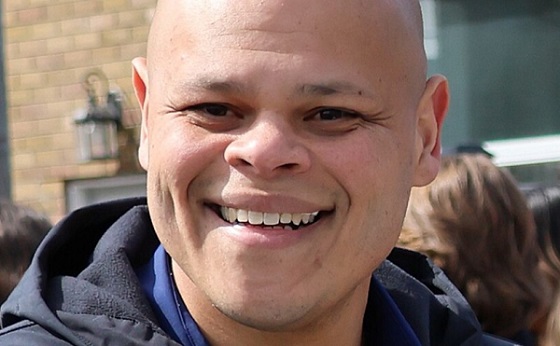Uncategorized
Ukraine bars entry to Russian males, upping ante in conflict

KIEV, Ukraine — Ukrainian officials on Friday upped the ante in the growing confrontation with Russia, announcing a travel ban for most Russian males and searching the home of an influential cleric of the Russian Orthodox Church.
The long-simmering conflict bubbled over Sunday when Russian border guards rammed into and opened fired on three Ukrainian vessels near the Crimean Peninsula, which Moscow annexed in 2014. The vessels were trying to pass through the Kerch Strait on their way to the Sea of Azov. The Russians then captured the ships and 24 crew members.
The Ukrainian parliament on Monday adopted the president’s motion to impose martial law in the country for 30 days in the wake of the standoff.
There has been growing hostility between Ukraine and Russia since Moscow’s annexation of the Crimean Peninsula from Ukraine in 2014. Russia has also supported separatists in Ukraine’s east with clandestine dispatches of troops and weapons. Fighting there has killed at least 10,000 people since 2014 but eased somewhat after a 2015 truce.
Petro Tsygykal, chief of the Ukrainian Border Guard Service, announced at a security meeting on Friday that all Russian males between 16 and 60 will be barred from
President Petro Poroshenko told the meeting that the measures are taken “in order to prevent the Russian Federation from forming private armies” on Ukrainian soil.
The announcement follows Thursday’s decision by U.S. President Donald Trump to scrap the much-anticipated meeting with Russian leader Vladimir Putin. Trump said it isn’t appropriate for him to meet with Putin since Russia hasn’t released the Ukrainian seamen.
Meanwhile, the Ukrainian intelligence agency announced on Friday that they are investigating a senior cleric of the Russian Orthodox Church.
Ihor Guskov, chief of staff of the SBU intelligence agency, told reporters that its officers are searching the home of Father Pavlo, who leads the Pechersk Monastery in
The Pechersk Monastery, the spiritual
The Ukrainian church, which has been part of the Russian Orthodox Church for centuries, moved close to forming an independent church — fueled by the conflict with Russia Ukraine’s Orthodox communities earlier this year.
There are currently three Orthodox communities in Ukraine, including two breakaway churches. Ukrainian authorities sought to portray the Russian Orthodox clerics in Ukraine as supporting separatists.
Ukraine’s president announced on Thursday that the Constantinople patriarchy has approved a decree granting the Ukrainian Orthodox Church independence from the Russian Orthodox Church, a major boost to the president’s approval ratings.
Both the Russian Orthodox Church and Russian authorities are strongly against the move and have warned Ukraine not to do it, fearing sectarian violence.
Russian government-appointed ombudswoman for Crimea told Russian news agencies that all the seamen have been transported from a detention
A Crimea court earlier this week ruled to keep the Ukrainian seamen behind bars for two months pending the investigation.
__
Natasha Vasilyeva reported from Moscow.
Yuras Karmanau And Nataliya Vasilyeva, The Associated Press
Uncategorized
Cost of bureaucracy balloons 80 per cent in 10 years: Public Accounts

The cost of the bureaucracy increased by $6 billion last year, according to newly released numbers in Public Accounts disclosures. The Canadian Taxpayers Federation is calling on Prime Minister Mark Carney to immediately shrink the bureaucracy.
“The Public Accounts show the cost of the federal bureaucracy is out of control,” said Franco Terrazzano, CTF Federal Director. “Tinkering around the edges won’t cut it, Carney needs to take urgent action to shrink the bloated federal bureaucracy.”
The federal bureaucracy cost taxpayers $71.4 billion in 2024-25, according to the Public Accounts. The cost of the federal bureaucracy increased by $6 billion, or more than nine per cent, over the last year.
The federal bureaucracy cost taxpayers $39.6 billion in 2015-16, according to the Public Accounts. That means the cost of the federal bureaucracy increased 80 per cent over the last 10 years. The government added 99,000 extra bureaucrats between 2015-16 and 2024-25.
Half of Canadians say federal services have gotten worse since 2016, despite the massive increase in the federal bureaucracy, according to a Leger poll.
Not only has the size of the bureaucracy increased, the cost of consultants, contractors and outsourcing has increased as well. The government spent $23.1 billion on “professional and special services” last year, according to the Public Accounts. That’s an 11 per cent increase over the previous year. The government’s spending on professional and special services more than doubled since 2015-16.
“Taxpayers should not be paying way more for in-house government bureaucrats and way more for outside help,” Terrazzano said. “Mere promises to find minor savings in the federal bureaucracy won’t fix Canada’s finances.
“Taxpayers need Carney to take urgent action and significantly cut the number of bureaucrats now.”
Table: Cost of bureaucracy and professional and special services, Public Accounts
| Year | Bureaucracy | Professional and special services |
|
$71,369,677,000 |
$23,145,218,000 |
|
|
$65,326,643,000 |
$20,771,477,000 |
|
|
$56,467,851,000 |
$18,591,373,000 |
|
|
$60,676,243,000 |
$17,511,078,000 |
|
|
$52,984,272,000 |
$14,720,455,000 |
|
|
$46,349,166,000 |
$13,334,341,000 |
|
|
$46,131,628,000 |
$12,940,395,000 |
|
|
$45,262,821,000 |
$12,950,619,000 |
|
|
$38,909,594,000 |
$11,910,257,000 |
|
|
$39,616,656,000 |
$11,082,974,000 |
Uncategorized
Trump Admin Establishing Council To Make Buildings Beautiful Again


From the Daily Caller News Foundation
By Jason Hopkins
The Trump administration is creating a first-of-its-kind task force aimed at ushering in a new “Golden Age” of beautiful infrastructure across the U.S.
The Department of Transportation (DOT) will announce the establishment of the Beautifying Transportation Infrastructure Council (BTIC) on Thursday, the Daily Caller News Foundation exclusively learned. The BTIC seeks to advise Transportation Secretary Sean Duffy on design and policy ideas for key infrastructure projects, including highways, bridges and transit hubs.
“What happened to our country’s proud tradition of building great, big, beautiful things?” Duffy said in a statement shared with the DCNF. “It’s time the design for America’s latest infrastructure projects reflects our nation’s strength, pride, and promise.”
“We’re engaging the best and brightest minds in architectural design and engineering to make beautiful structures that move you and bring about a new Golden Age of Transportation,” Duffy continued.
Mini scoop – here is the DOT’s rollout of its Beautifying Transportation Infrastructure Council, which will be tasked with making our buildings beautiful again. pic.twitter.com/
9iV2xSxdJM — Jason Hopkins (@jasonhopkinsdc) October 23, 2025
The DOT is encouraging nominations of the country’s best architects, urban planners, artists and others to serve on the council, according to the department. While ensuring that efficiency and safety remain a top priority, the BTIC will provide guidance on projects that “enhance” public areas and develop aesthetic performance metrics.
The new council aligns with an executive order signed by President Donald Trump in August 2025 regarding infrastructure. The “Making Federal Architecture Beautiful Again” order calls for federal public buildings in the country to “respect regional architectural heritage” and aims to prevent federal construction projects from using modernist and brutalist architecture styles, instead returning to a classical style.
“The Founders, in line with great societies before them, attached great importance to Federal civic architecture,” Trump’s order stated. “They wanted America’s public buildings to inspire the American people and encourage civic virtue.”
“President George Washington and Secretary of State Thomas Jefferson consciously modeled the most important buildings in Washington, D.C., on the classical architecture of ancient Athens and Rome,” the order continued. “Because of their proven ability to meet these requirements, classical and traditional architecture are preferred modes of architectural design.”
The DOT invested millions in major infrastructure projects since Trump’s return to the White House. Duffy announced in August a $43 million transformation initiative of the New York Penn Station in New York City and in September unveiledmajor progress in the rehabilitation and modernization of Washington Union Station in Washington, D.C.
The BTIC will comprise up to 11 members who will serve two-year terms, with the chance to be reappointed, according to the DOT. The task force will meet biannually. The deadline for nominations will end Nov. 21.
-

 Digital ID3 hours ago
Digital ID3 hours agoCanada releases new digital ID app for personal documents despite privacy concerns
-

 Business14 hours ago
Business14 hours agoMajor tax changes in 2026: Report
-

 Crime2 days ago
Crime2 days agoTerror in Australia: 12 killed after gunmen open fire on Hanukkah celebration
-

 Media2 days ago
Media2 days agoReporters determined to drive their industry and its reputation into the abyss one Tweet at a time
-

 Energy2 hours ago
Energy2 hours agoCanada’s sudden rediscovery of energy ambition has been greeted with a familiar charge: hypocrisy
-

 Daily Caller13 hours ago
Daily Caller13 hours agoChinese Billionaire Tried To Build US-Born Baby Empire As Overseas Elites Turn To American Surrogates
-

 Censorship Industrial Complex12 hours ago
Censorship Industrial Complex12 hours agoDeath by a thousand clicks – government censorship of Canada’s internet
-

 Crime2 days ago
Crime2 days agoHero bystander disarms shooter in Australian terror attack










